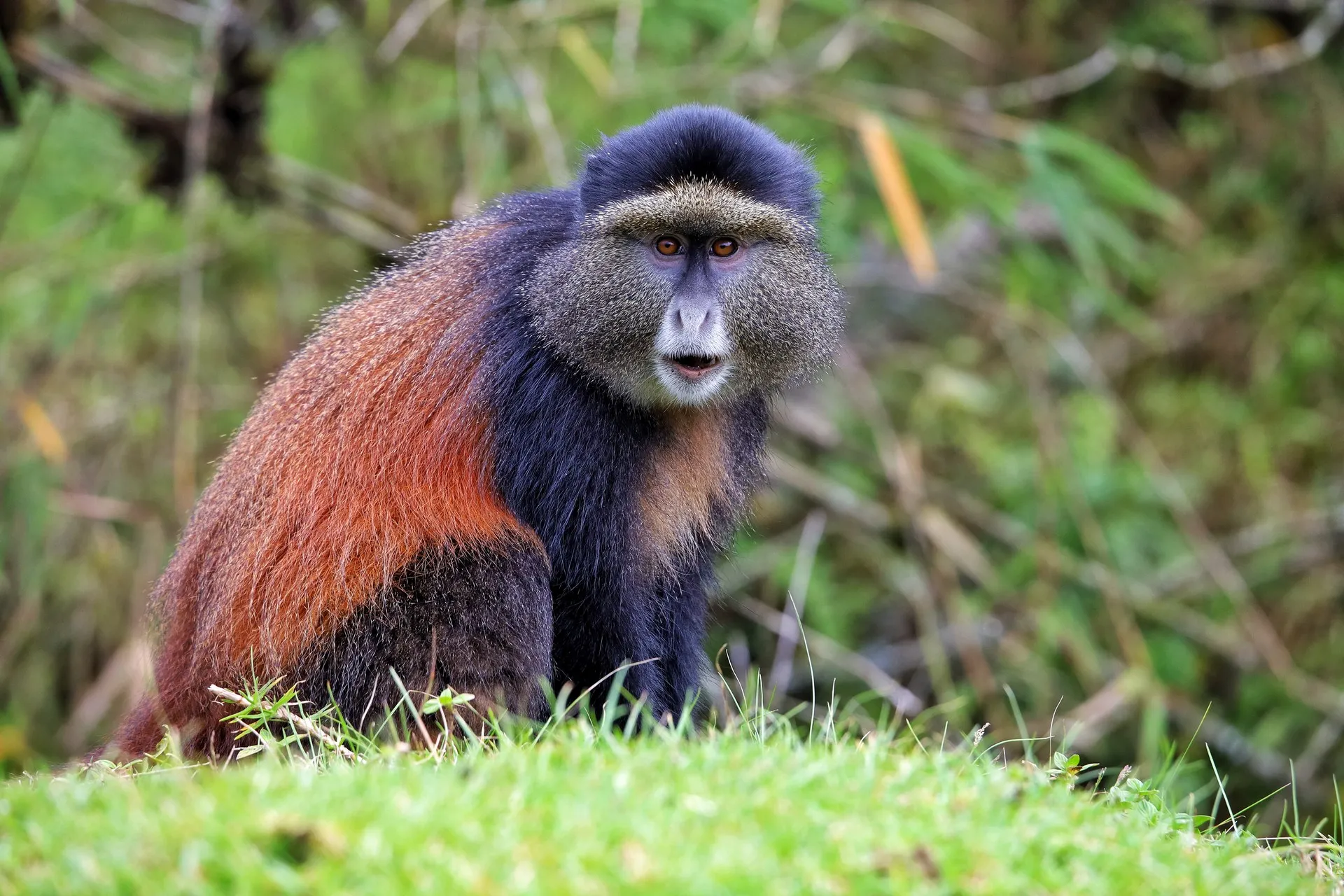The anticipation of seeing mountain gorillas in their nature environment in the jungle is unmatched, an hour spent with the gorillas is a life changing experience to many wildlife enthusiasts and can not be matched to any experience in this world.
Mountain gorillas are rare and endangered gorilla species only found in the Central and Eastern region of Africa thriving in the mountainous rainforest region. To be more specific, mountain gorillas are only found in three countries that is Uganda, Rwanda and Democratic Republic of Congo.
Planning a gorilla trekking safari can be quite daunting which is why you need to book your gorilla safari in advance and also follow certain guides for a great experience.
Here are the 11 practical tips for planning a successful and memorable gorilla trekking safari.
1. PLAN YOUR GORILLA TREK IN ADVANCE
Gorilla trekking is one of the most – sought for wildlife experience on the continent which is why you need to plan your gorilla trek in advance, you need to start planning your safari at least six months in advance. This is because there are many things you need to think of for a successful gorilla safari in Africa.
2. DECIDE ON WHICH COUNTRY TO TREK
You need to decide between Rwanda or Uganda as your gorilla destination, mountain gorillas can be trekked and viewed in Rwanda, Uganda and DR. Congo. Due to insecurity in the DRC, we do not recommend tourists to trek gorillas in Congo until further notice.
In Uganda, mountain gorillas are found in two destinations that is Bwindi Impenetrable National Park and Mgahinga Gorilla National Park. while in Rwanda, mountain gorillas are found and trekked in Volcanoes National Park.
Uganda’s Mgahinga Gorilla National Park hosts one habituated gorilla family – Nyakagezi open for gorilla trekking, the park is part of the Virunga Conservation Area spanning Rwanda and Congo as well as Uganda. This gorilla group has tendencies of migrating from Uganda to Rwanda.
Bwindi Impenetrable National Park has 18 habituated gorilla families open for gorilla trekking, these gorilla families are found in 4 gorilla trekking sectors of the park namely Buhoma, Rushaga, Ruhija and Nkuringo sectors. When planning to trek mountain gorillas in Bwindi, you need to know the sector you are trekking and your tour operator will always help you chose the best sector for you as well as book for your gorilla permit.
In Rwanda’s Volcanoes National Park, there are 10 habituated gorilla families open for gorilla trekking.
3. BUYING YOUR GORILLA PERMIT
To participate in gorilla trekking experience, you need a gorilla permit to access the park and take part in this mind-blowing activity. Your gorilla permit must match with the destination you are going to trek, for Bwindi Impenetrable National Park your permit must match with the gorilla trekking sector.
Once you have decided a gorilla destination to visit, the next step is purchasing the gorilla family. In Uganda gorilla permits are issued by Uganda Wildlife Authority and visitors can only be bought through a licensed tour operator. Gorilla permits in Uganda cost US $ 800 per permit per person.
In Rwanda, gorilla permits are issued by Rwanda Development Board and a gorilla permit costs US $ 1,5OO per person per trek.
Note: Gorilla permits are issued on a first come first serve basis and you need to book for your permit about 3 months to your gorilla trekking dates.
A gorilla permit will determine the accommodation to be booked as you need to stay near the starting point, for more information about gorilla permit contact your tour operator before making any decisions.
4. WHICH REGION ARE YOU TREKKING?
In Uganda, gorilla permit allocation is based on the regions. Bwindi Impenetrable National Park comprises of 4 gorilla trekking regions namely
- Buhoma region located in the north of the park with three gorilla families including Mubare, Rushengura and Habinyanja.
- Ruhija region located in the east of the park with 3 gorilla families including Oruzongo, Bitukura, and Kyaguriro.
- Rushaga region located in the south of the park and home to 5 gorilla families including Kahungwe, Mishaya, Nshongi, Bweza and Busingye
- Nkuringo region located in the South of the park with gorilla family such as Nkuringo gorilla family.
Before setting off on a gorilla trekking adventure, you have to the park and the region you are trekking.
5. ACCOMMODATION AND TRANSPORT
You have to know where you are going to stay during your gorilla trek, since this incredible experience starts with briefing early in the morning. You need to stay near the starting point for gorilla trekking experience, it is always better to ask for advice from your tour operator for the best option which suites your interest.
Note: accommodation options in gorilla trekking destination range from Budget, Midrange and luxury. The status of the lodge to stay at depends on your budget.
After booking your accommodation, you have to know the mode of transport to use to get to your gorilla trekking destination.
Typically, 4×4 wheel vehicles are used in Rwanda and Uganda.
6. GET TO KNOW ABOUT GORILLA RULES AND REGULATIONS
Mountain gorillas are endangered species with only 1009 individuals remaining in the world, due to their status you should aim at reducing on the risks which may lead to declining numbers of mountain gorillas. In so doing, you should know about the rules and regulations to follow and how you must conduct yourself while with the mountain gorillas.
Rules and regulations where set and must be followed by all visitors for protection of both the trekkers as well mountain gorillas themselves.
7. WHAT TO PACK FOR YOUR GORILLA TREK
Mountain gorillas live in the thick forests in areas dominated by steep hills, because of this breadth and terrain in the forest. You need to prepare what to wear for a successful and memorable trekking experience.
You need the following items
- Comfortable hiking boots
- long sleeved trousers and shirts
- gloves
- long stockings
- insect repellent
- Camera
- a hut
- sun glasses, plus energy giving foods like chocolate.
8. BEST TIME TO TREK THE MOUNTAIN GORILLAS
When planning your gorilla trekking safari, you must know the best time to trek mountain gorillas. The gentle giants can be trekked throughout the year, however the dry season is the best time to track mountain gorillas in Rwanda and Uganda, drier months are June, July, August and September. Throughout these months, there is little rain and chances are that the trek will be easy since the trails will be less slippery as well.
The months of April, May and November are the wettest months and the clients tend to avoid them
9. THE WALKING STICKS AND PORTERS
On the trekking experience, you need to have a walking stick to provide you with support while trekking through the steep hills and these are offered by most lodges and at the park headquarters. Also, you need to hire a porter who will help give you a push or pull when the going gets tough.
These can carry your pack and stay with you throughout the trek, porters are very helpful and hiring them is away of supporting the local community since most of them are local people from the villages near the gorilla parks.
10. HOW IS GORILLA TREKKING LIKE?
The whole process / experience starts with waking up early for breakfast and pick up by your guide, head to the park headquarters with your packed lunch boxes. Have a briefing sessions through which you are taken through the rules and regulations to follow while in the jungle and presence of the gorillas, you will then be assigned a gorilla family to trek (basing on your physical capability and interest) in groups of 8 people. Head to the starting point and enter in the jungle looking for mountain gorillas with a guide, a range and a tourism police officer who has to ensure that you are safe while tracking mountain gorillas.
The trek takes approximately 2 hours to 6 hours or more depending on the movement of the gorillas and their feeding range and once you locate the gorillas, you will spend one hour in their presence as you take photos and watching them go on with their lives. Return back to the park headquarters where each visitor will be given a certificate of recognition of your contribution to the conservation of gorillas.
11. COMBING OTHER EXCURSIONS WITH GORILLA TREKKING
Both Uganda and Rwanda offer a lot of other safari excursions apart from gorilla trekking that you might choose to add on your safari, some of the activities you can do in Uganda including visiting the source of the Nile, chimpanzee trekking, game viewing safaris and many more.
In Rwanda, some of the activities you can add on to your itinerary include chimpanzee trekking in Nyungwe Forest, game viewing safaris in Akagera National Park, golden monkey trekking and boat safaris on Lake Kivu among others.
In conclusion, though these 11 practical tips for planning a gorilla trekking may not cover every aspect of tracking mountain gorillas. They offer you the best tips and if followed religiously you will have the most memorable gorilla trekking experience of your lodge.











